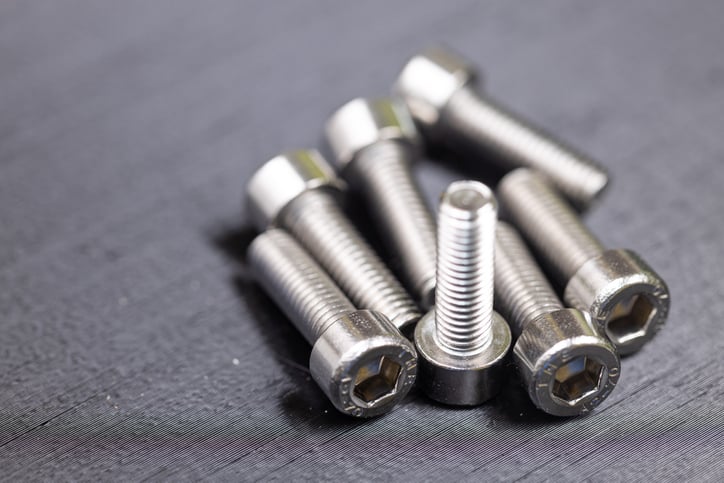What Materials Are Used To Make Aerospace Fasteners?
Screws, nuts, bolts, rivets, pins, and collars are common fasteners in the aerospace industry. But aerospace fasteners are frequently ...

Bolt head markings are a combination of letters, numbers, or both to help you identify the fastener that you’re looking for. If you know how to read the markings, you can tell who made it, the material used to make it, and the tensile strength it can withstand.
Various organizations provide specifications for different classes or grades that a bolt or other fastener must meet. The most common is the standard rating identified as SAE and the metric.
So let’s take a closer look at bolt head markings to help you understand them and make more informed fastener choices for your next project.
The choice between metric and standard depends on individual preference. Metric fasteners are preferable if you make products for the European market. Otherwise, they should not be interchanged as the threads, unit of measurement, and other specifications are different.
According to the fasteners' quality act, all fasteners must have the manufacturer's unique symbol for traceability purposes. Manufacturers can be held accountable should a problem arise, and users can be confident in quality products.
Each class or grade has marking requirements that manufacturers need to adhere to.
They are categorized by grades, with grade 2 being the lowest and grade 8 the highest. The grade represents the tensile strength and is represented by radial lines.
They only have a manufacturer's symbol on the head since there is no requirement. It is usually made of low-carbon steel, and since it is a low-strength bolt, it is not heat-treated. They are considered the least expensive and ideal for household machines and DIY projects.
In addition to the manufacturer's symbol, grade 5 bolts have three radial lines. They are made of medium-carbon steel. Case hardening means they are hard on the outside and soft on the inside. They are suitable for the automotive industry.
The grade 8 bolts are required to have six radial lines. They are very strong and fully heat-treated during production. These bolts are ideal for structural loads and can be found in heavy manufacturing.
They are made from 17%–19% chromium and 8%–13% nickel alloy steel. The markings vary from head to head as they are not universal.
The inch series also includes the ASTM standard, which includes:
They are set by the ISO and use two numbers separated by a dot to denote the class. Metric sizes are easier to scale and are therefore a better choice for applications with a wide variety of sizes. They range from classes 4.6 to 12.9, but the following are the more common ones.
They are made from medium-carbon steel. The identification numbers show that the bolts have a nominal tensile strength of 800MPa for a 16mm diameter and a nominal yield strength of 640MPa. Though they are strong, they cannot withstand extreme temperatures.
They are made from alloy steel and are heat-treated. All sizes in this class have a minimum tensile strength of 1040MPa, which is ideal for use in auto assembly.
They’re made from alloy steel and heat-treated. They have a tensile strength of 1220MPa. It is the strongest of all the bolts covered in this list. They find applications in shipbuilding, oil and gas, chemical industries, etc.
These are similar to the SAE stainless steel bolts, and their markings also vary.
In addition to size, you must consider the proof load, yield, and tensile strength when choosing a bolt. For all your fastening needs, Big Bolt has you covered.
We produce a wide range of quality fasteners, including custom orders, and we can have them ready for you when you need them. Talk to us for a quote for your next project.
Screws, nuts, bolts, rivets, pins, and collars are common fasteners in the aerospace industry. But aerospace fasteners are frequently ...
A fastener supply company will manufacture any type of fastener needed for specific industry use cases. Fasteners are the critical, often...
Ever wonder what causes bolts to fail? Or do you have experience with gaskets that no longer have the clamping force required to hold them?...
